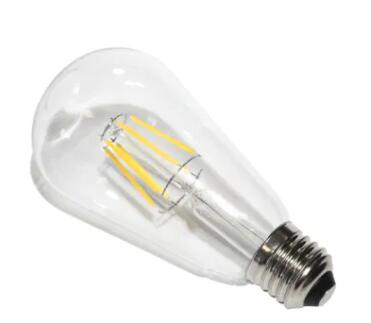Enlightening the Relationship: Exploring the Impact of Temperature on LED Bulb Performance
2023-12-22
Introduction:
As the world transitions to energy-efficient lighting solutions, LED bulbs have emerged as a beacon of innovation. However, their performance can be influenced by a variety of factors, and temperature stands out as a critical variable. In this blog, we delve into the intricate relationship between temperature and LED bulb performance, shedding light on how environmental conditions can impact efficiency, lifespan, and overall illumination quality.
1. Temperature Sensitivity: How Heat Affects LED Bulbs
LED bulbs are semiconductors that generate light when an electric current passes through them. Unlike traditional incandescent bulbs, which emit light through the heating of a filament, LEDs produce light without significant heat. However, they are not entirely immune to temperature effects. LED performance is notably influenced by the ambient temperature in which they operate.
2. Efficiency and Lumen Output: The Heat-Efficiency Tradeoff
The efficiency of an LED bulb is influenced by temperature. Generally, as the temperature rises, the efficiency of the LED decreases. High temperatures can lead to a reduction in lumen output, which is the measure of visible light emitted by the bulb. Therefore, it is essential to consider the operating temperature range specified by the manufacturer to ensure optimal brightness and efficiency.
3. Color Stability: Maintaining the Right Hue
Temperature fluctuations can impact the color stability of LED bulbs. The color temperature of LED lighting is measured in Kelvin (K), with lower values representing warmer, yellowish light, and higher values indicating cooler, bluish light. Changes in temperature can alter the color rendering index (CRI) and affect the perceived color of the light emitted by the LED bulb.
4. Lifespan Considerations: Heat and Longevity
The longevity of LED bulbs is closely tied to temperature management. Excessive heat accelerates the degradation of LED components, potentially shortening the lifespan of the bulb. Manufacturers often specify an operating temperature range, and operating the LED bulb within this range is crucial for maximizing its lifespan.
5. Overheating Concerns: Mitigating Risks
While LED bulbs emit significantly less heat than traditional incandescent bulbs, overheating can still occur in certain conditions. Enclosed fixtures, high ambient temperatures, or poor ventilation can lead to a buildup of heat. To mitigate the risk of overheating, it's essential to use LED bulbs in environments within their recommended temperature range and consider the fixture's design for proper heat dissipation.
6. Dimming Performance: Smooth Dimming in the Right Range
For those who enjoy the flexibility of dimmable LED bulbs, temperature considerations become even more important. Some LED bulbs may exhibit flickering or limited dimming range when exposed to extreme temperatures. Opting for LED bulbs explicitly designed for dimming applications and within the specified temperature range ensures a smoother dimming experience.
7. Cold Temperature Considerations: Winter Illumination Challenges
LED bulbs may exhibit reduced performance in extremely cold temperatures. While they are generally more robust in cold conditions compared to fluorescent bulbs, users in colder climates should be aware of potential delays in full brightness and reduced efficiency during frigid temperatures.
Conclusion:
The impact of temperature on the performance of LED bulbs is a nuanced interplay that requires careful consideration. From efficiency and lumen output to color stability and lifespan, understanding how temperature influences LED bulb performance empowers users to make informed choices. By adhering to manufacturer recommendations, maintaining suitable operating conditions, and choosing LED bulbs designed for specific applications, individuals can harness the full potential of these energy-efficient light sources while enjoying reliable, long-lasting, and visually appealing illumination.



